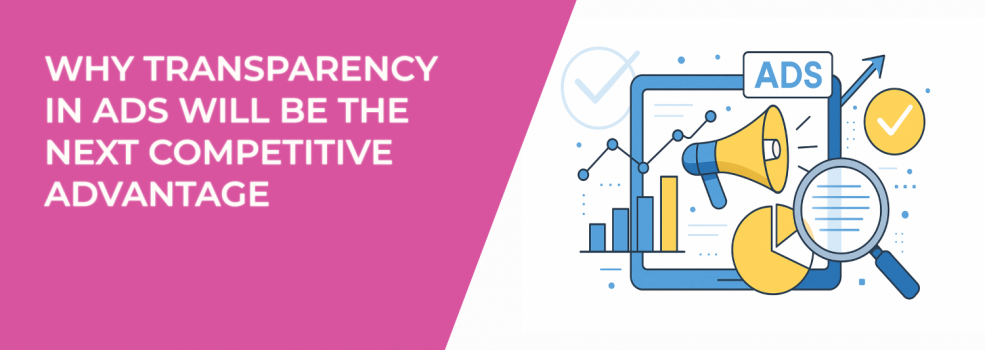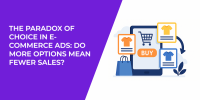Advertising on Facebook, Instagram, and other platforms is no longer just about reach or clever messaging. People are more cautious with what they click on, and they want to know who they’re dealing with. Transparency in ads — being open about targeting, pricing, and intent — is becoming a real advantage. Brands that don’t adapt will struggle to earn attention.
Why Transparency Matters
The role of transparency in advertising has never been more critical than it is today. Audiences are more informed, more skeptical, and more selective. Every time they open an app, they’re hit with dozens of ads. They’ve learned to spot generic claims and hollow promises within seconds.
At the same time, there’s more public debate about how ads are targeted. People know their data is being tracked — but they don’t always understand how it’s used. When they see ads without clear explanations, it can feel invasive. That sense of unease leads to less engagement, lower trust, and weaker brand relationships.
Transparency is the antidote. It shifts the interaction from “Why am I being targeted?” to “I see why this is relevant.” That small mental switch can make the difference between ignoring an ad and clicking on it. For advertisers, it means higher performance, but it also means building a foundation of trust that carries over into the long term. If you want to see how targeting strategies are evolving, check out this guide on Facebook Ads Targeting Updates in 2025.
Special Case: Political and Social Ads Transparency
One area where transparency rules are especially strict is in political and social issue advertising. Meta has already introduced policies that make targeting choices for these ads visible in the Ad Library.
Starting in July 2022, information about targeting selections for ads about social issues, elections, or politics has been included in the Ad Library at the Page level. This data goes beyond the ad creative or who paid for the campaign — it also reveals which targeting options were used, such as:
-
Location. For example, “100% of the amount spent was targeted to the United States, which includes 2,450 ads about social issues, elections or politics.”
-
Age. Example: “35% of the amount spent was on targeting ads to people aged 55 years old.”
-
Gender. Example: “75% of the amount spent was on targeting ads to women.”
-
Detailed targeting. Example: “30% of the amount spent, or 280 ads, was on targeting people interested in sustainability.”
-
Language. Example: “90% of the amount spent was on targeting ads to English speakers.”
-
Custom audiences. Example: “35% of the amount spent included a custom audience.”
-
Lookalike audiences. Example: “10% of the amount spent included a lookalike audience.”
This information is available in the Audience tab of the Ad Library, where spend and ad counts are aggregated across 7, 30, or 90 days. Eligible university-affiliated researchers can even analyze this data further through Meta’s FORT (Facebook Open Research and Transparency) platform.
And there’s more change coming. In response to the European Union’s Transparency & Targeting of Political Ads (TTPA) regulation, Meta will stop allowing social issue, electoral, or political ads in the EU starting in October 2025. The TTPA creates strict limits on how political ads can be targeted — so strict that Meta decided to withdraw these ads altogether in that region.
This example shows where the industry is heading. Regulations will continue to push for greater openness, and advertisers who embrace transparency early will adapt more easily than those who resist.
What Transparency Looks Like in Practice
Transparency in ads doesn’t mean overloading people with information. It’s about removing unnecessary friction and showing enough for them to feel comfortable. Done well, it makes your brand appear more confident and approachable.
Here are some clear ways advertisers can apply transparency:
-
Targeting clarity. If you’re showing an ad to people who visited your site in the last 30 days, say it. A short line like “You visited us recently — here’s a reminder” connects the dots for the user.
-
Straightforward pricing. Instead of “affordable solutions,” write “plans starting at $29/month.” People trust exact numbers more than vague terms.
-
Concrete proof. If you say “used by thousands,” back it up with “over 12,400 customers in 20 countries.” Precise numbers look real — round ones often look made up.
-
Visible safeguards. Add a clear opt-out link, mention compliance with GDPR/CCPA, or show trust badges. Even if most people don’t click, they notice.
Each of these examples builds confidence. They remove the guesswork that often keeps people from engaging with an ad. When the path is clear, the decision feels safer. For more examples of how advertisers refine messaging for clarity, see The Ultimate Guide to Facebook Ad Formats.
The Business Case for Transparent Advertising
Marketers often focus on short-term results — clicks, leads, conversions. But transparency creates a ripple effect that improves every stage of the funnel. It increases engagement at the top, lowers acquisition costs in the middle, and strengthens customer loyalty at the bottom.
To make the value of transparency more concrete, think about these key benefits:
-
Higher engagement. Honest, specific ads stand out in a crowded feed. People are more likely to stop scrolling when they feel the ad is speaking to them directly.
-
Better platform performance. Facebook and Instagram reward ads with strong engagement by lowering CPMs. Transparent ads often achieve higher relevance scores.
-
Longer customer lifetime. Buyers who feel well-informed from the start are easier to retain. They churn less because they entered the relationship with realistic expectations.
These outcomes go beyond quick wins. They build momentum that compounds across multiple campaigns, giving transparent advertisers an edge over competitors.
How to Add Transparency to Your Ads
Adding transparency to advertising doesn’t have to mean a complete overhaul. In most cases, it’s about making small, deliberate adjustments to your copy and creative. The goal is to reduce doubt and replace it with clarity.
Here are some practical steps you can test:
-
Review your copy. Replace abstract words (“innovative,” “leading,” “affordable”) with specifics that can be verified.
-
Explain why. If someone is in a retargeting audience, tell them. If the ad is seasonal, mention it. A single line can prevent confusion.
-
Show the process. Share behind-the-scenes clips, a short demo, or how your product is packaged. This makes the ad feel less like a sales pitch and more like an inside look.
-
Disclose limits. Be upfront about what your product doesn’t do or where the free trial ends. Counterintuitive as it sounds, this makes people trust your promises more.
-
Test transparency. Run A/B tests where one version includes extra disclosures. Measure how it affects CTR, CPC, and conversions. Often, clearer ads perform better even if they seem “less polished.”
These steps don’t just improve ad clarity — they also align with best practices for building stronger funnels. To dive deeper, explore this guide on Facebook Ads Funnel Strategy.
Turning Transparency into an Advantage
Most advertisers are still hesitant to be too open. They worry that sharing too much will scare off buyers or reveal strategy. In reality, the opposite happens — hiding details makes people suspicious.
Transparency signals respect. It shows that you see your audience not just as clicks, but as people who deserve clarity.
That respect creates a level of trust that competitors can’t easily replicate.
The more straightforward your ads are, the more credibility you build. And in a marketplace full of noise and manipulation, credibility is what turns transparency into a lasting competitive advantage.
So before you launch your next campaign, ask yourself: If I were the person seeing this ad, would I feel informed or left guessing?
That simple question will guide you toward creating ads that not only perform, but also stand the test of time.

